|
Location Melbourne area Equipment Zoom H4N MKh60 Boom Pole and Zoom H4 D112 mini tripod H2a Another busy day of walking and recording. I realized that even though I have recorded several vehicles and tried to make comprehensive lists of all the sounds of each vehicle I have never recorded general traffic sounds. For a current project I need some large trucks driving by as well as lots of cars passing and general traffic ambiance sounds. So I set out to position myself along some of Melbourne’s busy roads to capture some material. First off I got completely distracted by a nearby construction site. There was a crane with a claw attachment picking up concrete pylons and dropping them into the back of a dump truck. The resulting crashes were really good, so I spend easily 20 minutes standing about 20 meters away recording as much as I could. I am always disappointed that these events are accompanied by the ever present diesel sound of the crane itself. It would be great to be able to get just the crashing sound, but considering the shear weight of the pylons that is never going to happen. The impact itself is always so loud as to cover other sounds, but the trail off of the sound will always include the sound of the crane engine. It amazes me how people react when they see a microphone. It doesn’t even matter if it’s switched on, or if I am obviously holding in such a manner that shows I am not recording; you always get people yelling, calling out “hi mom” or just being determined to get their voice recorded. Its no different when you put them in cars. The number of people that drove past me honking their horns as I was recording traffic was amazing. In this case however it was actually kind of useful to me as it gave a nice sense of city traffic ambience. I walked several kilometres around one of the major freeways into Melbourne and recorded cars both entering and leaving the freeway, as well as a good amount of material of cars running on the freeway. One of the main issues I have found with recording traffic is that the dynamic range is far more that I often expect it to be. A standard car driving past dies not alter the input levels greatly, but a motorbike (especially something like a Harley) is so much louder that it risks peaking the levels. Trucks are similar as they generate a lot more sound as they pass. Its often good to capture the sounds of the trucks, but this means the cars tend to be too quiet. It becomes a bit of a game riding the levels and watching what is coming past next. I caught a train out to where I had recorded some amazing factory sounds a few years back to find the factory was closed down and was now new apartments. This was really disappointing as this factory had some of the best sound machines I have heard and had access right on the street so recording them was easy. I had recorded them in the past with older equipment, but I wanted to get an updated recording and test my new mics. It seems to be getting harder and harder to get access to places like factories as they are all on huge estates these days with giant fences miles away from the buildings. I wont trespass so its great when I do find a place right on the street. I made the most of being right next to a train line and tested out the D112 very close to the rails as a train went past. The D112 is designed to capture loud sounds and dealt with being only a couple of feet away from the train really well. Any of my other mics would have peaked badly. The D112 just took it all in its stride. This will be a good mic to use on firearms more in the future. After I got home and had a bit of a rest. (I have walked over 10 kilometres so far today) I did a few tests in a bucket full of water with the H2A hydrophone. I have bought a couple of cans of compressed air to generate bubbles underwater. The bucket is obviously too small and the sounds reflect of the sides very obviously. The issue with using the pool at the apartment is the water filers system makes a constant obvious hum. So a walk down to the docks was in order. Checkout a review of the H2A XLR in the reviews section I set myself up so the hydrophone was submerged about a foot in the water, then reached down with the compressed air can and released busts of air. I did this until I had emptied the can, shifting positions so the bubbles came up under the mic, past the side of the mic, and away from the mic. Each position produced slightly different sounds. I released short and long bursts. I have since altered the pitch of some of the material and it produces really effective huge bubble sounds like a large explosive device being triggered underwater. I plan to make a whole series of underwater explosions sometime soon. I also want to do a lot more underwater recording as I am really enjoying the new opportunities the H2A is providing me with. Just one note, be careful if you are using compressed air in cans. The water itself was already pretty cold in winter, adding to that a can of air under pressure and my hand got really cold. I actually froze a couple of fingers briefly which was somewhat disconcerting.
0 Comments
Location Melbourne Docks Equipment Zoom H4N MKh60 Boom Pole Footscray road is kind of interesting to walk along at night. This is a main road used mostly by commercial traffic as it runs along Melbourne’s main wharfs. There are giant dock cranes and hundred of shipping containers all along the road. There are also dozens of trucks constantly driving along the road which is why I was here. Well actually I was here because I was going for a walk with my wife, but knowing there would be dozens of trucks I carried my gear with me to record a couple as they went by. Semi trailers make quite a lot of noise when they start up and stop, but when they are actually driving by they can be fairly quiet sometimes. Walking 5 kilometres along the road and back provided heaps of opportunities to record several trucks at various speeds, as well as a couple manoeuvring into the market areas opposite the docks. This meant I captured some good thumps sounds as the trailers drove over the gutters. It was good to be able to capture pretty much everything I needed in a short period of time while also being able to do some good exercise. Location Kilsyth Melbourne Equipment Zoom H4N D112 & Beta 58A and Zoom H4 MKh60 Tripod mount This is the first big recording session I have done for a while. Full time work and all the documentation for Sound Library has kept me away from major recording trips for a while, but I do have some good sessions planned over the next few weeks so things should pick up again. Today I went to a car wreckers in Melbourne’s eastern suburbs, just at the foot of the Dandenongs mountain range. The guys at Pick a Part were really helpful and let me wander around and record some busted old cars. The set-up down there is perfect for what I do as all the cars are neatly laid out to allow people to go in and find the car they need and remove the parts they want, so its all very organised. This allowed me to go through and find the specific things I was after. I wanted cars that were already heavily damaged, so if I bashed on any of the panels I would not be damaging anything useful to the wreckers, but also because already damaged panels rattle and squeak better than new panels. I spent three hours moving around the yard sampling various sounds. With the new equipment it is easier for me to record with a range of mics and I am finding this is giving me far more options with the material I end up with. I need to sort things out a little to make it easier to work this, but using the H4N with both two mic inputs and its own internal microphones working is proving to be really effective. I attach my AKG D112 to one channel to capture any high power sounds as well as good low end material, and to the second input I attach the Shure beta 58A which is a straight forward good workhorse mic. The differences in sound colour from the two mics are noticeable on most recordings. I have also found the H4N’s own mics are actually pretty good. I need to be careful to protect them from wind noise, but once that’s taken care of they have been giving me some good sample material. Lastly I have the older H4 running my MKH60 shotgun mic. Its my old reliable mic, but I have found that often one of the other mics gives me a sample that I would prefer to use. With the range of samples I captured from today I am going to experiment with making mix blends of the different mic samples to create a new version of the sound that uses the best elements of each of the mic versions. By mixing them together I can hopefully capture the fuller low end frequencies of the D112 with some of the crisper high end material from the MKH60 and 58A. It will be different every time I record, but having a general understanding of each mics strengths should help me to create better mixes for any situation. The D112 was great for loud crashes and bangs, but struggled a little with something more subtle like bouncing a tyre up and down on the road. This makes it a good complement for the MKH60 as it sometimes struggles with the higher level sounds and can max out if its placed too close to the source. The other advantage of having small portable units like the H4 series is it was very easy for me to place the unit and mics inside areas like car boots, or between panels and then beat on the outside of the panels to capture the sound. This way I can have a microphone outside and inside simultaneously to provide more options of raw material. I may right up a small section on how I go with creating mix blends of some of the material from today’s recording session. I will still archive the multiple mic samples so I have them all, but I don’t think I will include all of these in the library. I think having several versions of each sound to cover various types of microphone and its position is being a little excessive, even for this library.
Website www.pick-a-part.com.au/ Location Docklands Melbourne Equipment Zoom H4N H2a XLR Hydrophone Continuing to test some of the possibilities of what I can do with the hydrophone before I get into planning a proper session with it, I thought I’d try a couple more ideas. (I am also waiting for the weather to not be so bloody cold as one of the ideas involves me being in the pool) I purchased an air horn a while back to record some sounds for sports fans or whatever making noise, and I decided to see what this would sound like if I set it off underwater. I just submerged my arm with the air horn as I am not going swimming on a day like today. The sound was unbelievable. I was expecting some general bubbles from the compressed air inside the can but because of the horn attachment the air created a specific pitch, however it also instantly created bubbles which rose to the surface. The end result is a very strange series of tones that instantly pitch up, sounding slightly like lots of laser blast sounds. No idea what they can be used for but it was a cool effect. From this result I am going to buy a variety of compressed air sources and record various sounds underwater. I want to capture the sound of large bubbles being generated underwater as this is the core sound I would need to create an underwater explosion or volcano sound, but in general I want to see how many different sounds I can capture underwater and how different they sound. I think the next step will be to fill the bathtub and see if the sounds generated in there are much different to in the pool. Sadly when I put the microphone in our fish pond I did hear anything, I was hoping the fish might have been having a conversation at the time, but no such luck. Location Portland Victoria Equipment Zoom H4 Zoom H4N MKH60 Tripod Mount A long weekend is a nice break from work, but when it’s raining most of the time it does make it a little less fun. It’s still good to get out of Melbourne though. We hired a car and headed down the Great Ocean Road in Victoria's south west for a few days. There is some great scenery in the area and it was a nice way to relax. I usually carry all my gear even if I don’t have anything specific to record. I did keep an eye out for a good example of an Australia windmill (technically a wind pump) but its seemed that any that were close to the road were not moving. I didn’t really want to go wandering across someone’s property to record one, and I think I need one that doesn’t work properly anyway. I did get nice and close to one once but it was almost completely silent. I need to find a nice old rusty one that’s going to rattle and clank for me. On Sunday we found ourselves in Portland which is one of the western most towns along Victoria’s coast and apparently the first town in Victoria established in 1839. Portland used to have a cable tram network, the cables are gone and I suspect the tracks that still exist are not the original route, but there is still a diesel operated tram for tourists. The engine car sounds pretty much like a small truck, but it was quiet enough to allow me to stand at the back of the passenger car and record the wheels on the track. I was very happy that I was able to record the tram without the motor being audible as this is pretty much how the original tram would have sounded. The cable pulley would have made some noise, but generally the tram would have only made the sound of its movement on the tracks. I’d love to record a working cable pulley system, but I suspect I might have to travel to San Francisco one day to achieve that. I don’t know how many other functioning cable cars there still are in the world. I didn’t have my boom pole with me so I needed to use the tripod as a pole. It was not a bad substitute, but the tripod is much heavier than the boom pole and so it was more tiring to hold it off the back of the tram for half an hour. I had a minor issue with the H4 so quickly switched across to the H4N. I’m not sure if the H4 has a more serious issue as I have not been able to test it properly yet, It was switching between indicating full batteries and then wanting to switch off because of lack of power. I am hoping the rain hasn’t shorted the unit out. It only got slightly wet, but there might be a problem with it. I will test it sometime this week. I’m glad I took the H4n on the tram because it gave me an alternative. Being a tourist tram there were lots of people on board and they were as noisy as most tourists. The advantage of a 60 minute round trip is that it gave me a lot of time to capture footage so I hope there is enough material without noisy tourists in the background. Funnily enough the children were all pretty quiet, it was the adults in this case that were noisy. I did have the microphone positioned almost underneath the tram for most of the journey so it should provide some clean samples. I also made sure to capture the sound of the brakes squeaking and the bell ringing. Lastly on Monday I recorded the engine bay of the Toyota Camry we had hired for the weekend. I didn’t want to do a full recording of this car at this stage. I just wanted to capture the engine bay sound so I can compare it to the Hyundai I recorded a few weeks back. I can record a Camry at any time if I decide it's worth it. I did a few more tests with the hydrophone down at the beach on the weekend, but I am still seeing what it is capable of before I do some serious recordings.
Website www.portlandcabletrams.com.au/ |
AuthorStephan Schütze has been recording sounds for over twenty years. This journal logs his thoughts and experiences Categories
All
Archives
April 2019
|
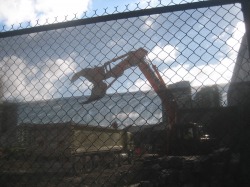
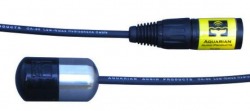
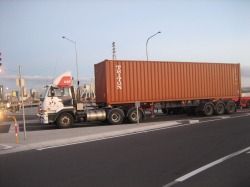
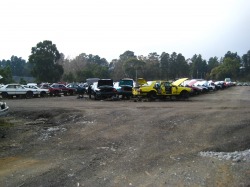
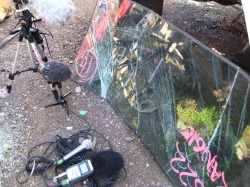
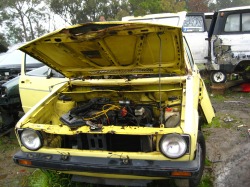
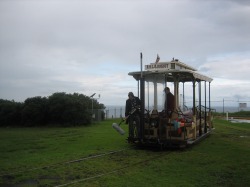
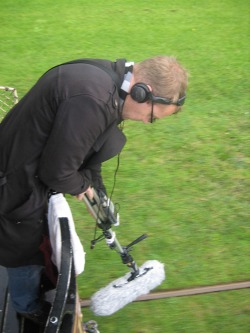
 RSS Feed
RSS Feed
